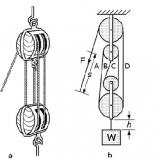Soft Robot working with air muscles – Walking and crawling 11051
Soft Robot Walking and Crawling – Robots Inspired by Animals
There’s just something about those air muscles that soft robots use that creeps me out, but it’s hard to deny that as the designs get more and more refined, the robots themselves are getting capable enough to actually, you know, start doing stuff. Take this soft robot from Harvard, for example: it not only walks, it knows several different gaits and can deflate to stuff itself through tiny little gaps.
And there’s nothing solid in there at all: You could probably smash this thing with a hammer a whole bunch of times and it would still keep coming for you. And that’s part of the idea. The other part of the idea is that soft robots can adapt themselves to squeeze through gaps (as in the vid above) and otherwise get into places that robots with rigid structures might not be able to.
This particular robot (which comes from George M. Whitesides‘ lab at Harvard) distinguishes itself by being capable of several unique gait styles including walking, crawling, and slithering. Each of these gaits is controlled by pumping air at up to 10 psi into a succession of limbs, inflating and deflating elastomer compartments to provide temporary structure and rigidity. In addition to slipping through gaps, the robot can make it across things like felt cloth, gravel, mud, and Jell-O (don’t ask).
As the Harvard researchers explain in a paper in PNAS, the robot was inspired by animals like squid, starfish, worms that “do not have hard internal skeletons,” and the advantage of soft robotics is that “simple types of actuation produce complex motion.”
Pretend to act shocked that the development of this robot has been funded by DARPA, and then start exercising your imagination as to what could be done with an indestructible, unstoppable, squishably soft little robot.
http://youtu.be/2DsbS9cMOAE
“They need to make one that doesn’t have all those wires sticking out of its ass!”
(Youtube User Comment )
Camouflage Bendy Robot Changes Colour for Disguise
By Rebecca MorelleScience reporter, BBC News
A robot that can change colour to either blend in with or stand out from its surroundings has been created by scientists. The machine, designed by researchers at Harvard University, was inspired by the camouflage skills of sea creatures such as octopuses, cuttlefish and squid.
Like these cephalopods, the robot has a soft, rubbery body and can move with flexibility. The study is published in the journal Science. Professor George Whitesides, an author of the paper, said: “Conventional robotics is a pretty highly developed area, and if you look at various robots you find that most are basically built on the body plan of a mammal. “Our question is: Why do you have to do that? Why not think about organisms that are soft, that might have quite different structures and ways of moving and strategies for camouflage. And the obvious place to look is underwater.”
In 2011, the research team published a paper in the Proceedings of the National Academy of Sciences (PNAS) that outlined details of a “soft robot” that could crawl and bend under obstacles. The machine was made from silicon-based polymers, and its movement was driven by air pumping through tiny cylinders in its four “legs”.
Now the scientists have added another layer of complexity to these robots by giving them the ability to disguise themselves. The camouflage-bots are covered in a network of tiny channels. As different dyes are pumped in, the robots can quickly change their appearance. As well as changing colour, hot or cold fluids can be pumped into robots, enabling them to be thermally camouflaged, and fluorescent liquids allow them to glow in the dark.
Currently, the fluid is pulled in from a reservoir, but in the future it could be incorporated into the robot’s body.
Search and Rescue
Lead author Stephen Morin said the soft machines had similarities with organs or tissues and could have medical applications. He explained: “The idea is that if you have a system that can simulate muscle motion very well and a system that can transport fluid, by combining those you can fabricate that device to fit a specific surgical problem. “And in planning for surgery or training, you can use something like this in guilt-free way.”
The team also said the machines could have a future in search and rescue. Prof Whitesides said: “For that kind of application, having it be able to advertise itself, for example, in a way that stood out against the dark would be a good thing.” He said the fact that the robots were lightweight, flexible and also relatively inexpensive was advantageous. He explained: “The nice thing about these systems is that their properties are very different from conventional robots. You get pretty complicated motions from pretty simple systems.
“For a mission like search and rescue, these kind of robots could in principle be throwaway. So if you took a $25,000 robot and sent it in and the building falls down, then that is a real issue. If you send one in which is $100 and the roof falls in, you really don’t care.”
http://www.bbc.co.uk/news/science-environment-19286259



